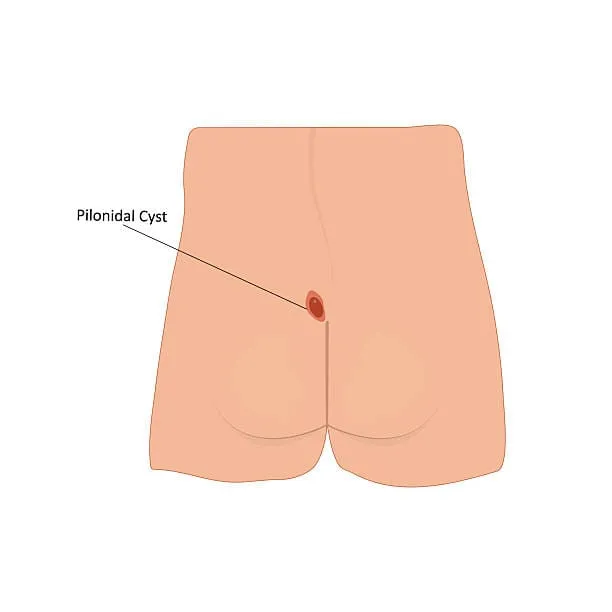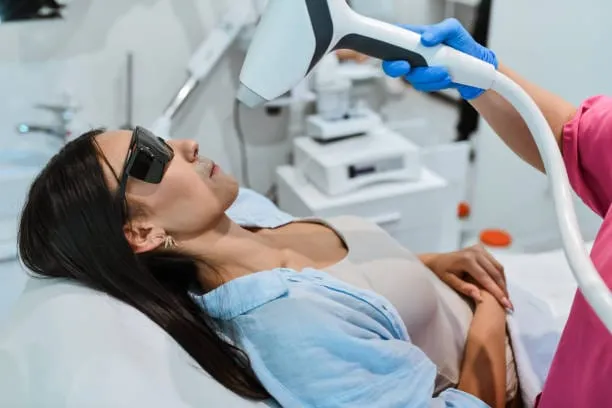Why Pilonidal Cyst Removal Could Change Everything Discomfort to Comfort
Why Pilonidal Cyst Removal Could Change Everything Discomfort to Comfort
A pilonidal cyst is a painful, yet uncomfortable and embarrassing condition to live with, often requiring pilonidal cyst removal for lasting relief.Although they are relatively small and persistently troublesome, these stubborn lumps can be located near the tailbone and lead to continuous irritation, Diseases, and sudden outbreaks, making sitting, walking, or even wearing certain clothes a daily challenge. There are a lot of people who experience this problem and live in silence, not knowing whether there is a good solution to their problem or fearing Procedure.

The truth? The procedure to remove a pilonidal cyst is also a safe and simple procedure that would transform your life entirely. Whether you are experiencing a single episode of pain or you have to manage recurring Diseases, the best way to end the cycle is usually cyst removal.

In this article, we will guide you through everything you need to know about pilonidal cyst removal, including the reasons cysts form in the first place and what to expect during your recovery after the procedure. We will also demonstrate why professional treatment with Revitalise London may be the best choice you can make for your skin, comfort, and overall well-being
What is a Pilonidal Cyst?
Pilonidal cyst is a tiny sac-like swelling that develops under the skin around the tailbone; this is typically on the upper part of the crease of the buttocks. It is usually full of hair, skin particles, and fluid, and may become swollen, painful, or even contaminated. Although it may be a minor bump at first, it can quickly turn into a painful abscess if left untreated.
What Is The Cause Of A Pilonidal Cyst?
It is considered that ingrown hairs are the primary cause of pilonidal cysts. Once the hair becomes embedded under the skin due to friction, pressure, or prolonged sitting, the body reacts as if it is dealing with an object that is not part of it, which leads to inflammation and, in some cases, Disease. Other causative factors, such as excessive sweating, tight-fitting garments, and poor hygiene, can also exacerbate the condition in the long term, contributing to the area.
Pilonidal cyst is more prone in some people than others. Individuals with rough or heavy body hair, or those who sit a lot or have sedentary occupations, and people who struggle with obesity or sweat too much are at a greater risk. Moreover, the tailbone area may have been previously injured or traumatised, which increases the likelihood of this condition occurring.
What to Watch for Symptoms
Pilonidal cyst usually begins as a painful, swollen bump close to the tailbone. As it runs, it may become red or warm. In the case of Disease, the cyst can secrete pus or blood, which is sometimes accompanied by a bad smell. Another usual symptom is pain during sitting, walking, or even repositioning.
Untreated pilonidal cysts are likely to recur, and subsequent Diseases could be more challenging and disruptive than before.
When you experience recurring symptoms, the most effective long-term remedy is the removal of a pilonidal cyst. Below, we will take a closer look at why these cysts are likely to recur and what you can do to break the cycle.
Recurrence After Pilonidal Cysts Removal
Once you get and overcome a pilonidal cyst, you are likely to have concerns about the cyst recurring. However, unfortunately, there is a high chance of recurrence, which is very frustrating to many. Understanding the causes of this condition is crucial in determining the most effective treatment, particularly when considering the Treatments removal of a pilonidal cyst.
Incomplete Healing
Failure to heal completely is one of the most frequent causes of a pilonidal cyst recurrence. When only the drainage of a cyst (also called lancing) is performed, there may be some release of pus and fluid, although the source of the problem, e.g., embedded hair or the cyst wall, remains. It can lead to the refilling of that cyst or its reDisease.
Short-Term and Not Permanent Solutions
Several over-the-counter remedies or home remedies are only temporary solutions. Warm compresses, topical creams, and even antibiotics may temporarily alleviate inflammation (or Disease), but they seldom prevent the cyst from forming again. Unless the cyst structure is eliminated, the chances of a recurrence are high.
Lifestyle Triggers
Recurrence is also greatly dependent on daily habits. Sitting for long hours, particularly on hard surfaces, may exert pressure on the lower back at all times. Tight clothes can contribute to there being more friction in the region. Lack of hygiene in the lower back and gluteal area may also lead to skin irritation. Additionally, rough body hair and the absence of routine grooming can cause the clinging of hairs, leading to the formation of another cyst. Such lifestyle factors may still worsen the area even after treatment has been administered successfully.
Hidden Pilonidal Cyst Removal
In more severe or chronic cases, pilonidal cysts may develop into sinus tracts under the skin. These are not easy to diagnose and usually go unnoticed when undergoing simple therapies. If left untreated, these tracts may become recontaminated, resulting in the formation of multiple cysts or permanent skin openings.
All this is why the removal of a pilonidal cyst by a professional medical worker would be the best way to halt the cycle.
What to Expect When Having Pilonidal Cyst Removal
When you have exhausted the benefits of using antibiotics or draining procedures and the results are not long-lasting, pilonidal cyst removal may be the best help. Luckily, the Procedure is simple, less invasive, and in most cases, transformative for people who have to deal with frequent cysts.

Diagnosis and Consultation
It starts with a professional consultation. During this visit, the practitioner will evaluate the size and extent of the cyst, search for any concealed sinus tracts, and review your past medical history. They will also talk about your symptoms, previous treatment options, and what would be the most appropriate one. In cases where the Disease persists or drainage surgeries have been unsuccessful, Treatments removal is typically the preferred option.
What is the Procedure?
The majority of pilonidal cyst removals involve a local anaesthetic. You will not sleep, but the part will be anaesthetised, and you will not experience any pain. In more complex cases, general anaesthesia can be used to ensure total comfort.
The Treatments technique involves a small incision to allow for exposure and excision of the entire cyst sac, as well as any communicating sinus tract. The Doctor then thoroughly cleans the area to minimise the risk of Disease or recurrence. The wound can be sutured using dissolvable stitches or may be left open to heal on its own, depending on the technique. In any case, the priority is to eliminate the issue and facilitate healthy healing.
It is primarily an outpatient treatment, which means you will be allowed to leave immediately after the procedure, typically taking only a few hours.
How long does it take?
The Treatments process itself is estimated to be approximately 30 to 60 minutes. Once the Procedure is complete, you will be monitored during the post-operative stage to ensure that you feel stable and well. The majority of patients are released to go home within a few hours
Is It Hurtful?
There is also mild pain that is experienced after the anaesthetic wears off, and over-the-counter pain relievers can resolve this. The majority of patients report that although the pain experienced in the short term is considerable, it is overshadowed by the long-term relief that they experience after pilonidal cyst removal.
This is because knowing what to expect will put you at ease and prepare you for a more straightforward healing process.
Pilonidal Cyst Removal Recovery
As soon as your procedure is done, the healing process starts. Recovery is a crucial component of the process of removing a pilonidal cyst, and understanding what to expect can help speed up the recovery process and make it more comfortable.
1. Immediate Aftercare of Pilonidal Cyst Removal
It is expected to experience some soreness, swelling, or pain around the Treatments area during the first 24-48 hours. The use of pain relief drugs such as paracetamol or ibuprofen usually controls these.
Depending on the type of procedure, your wound can be closed with dissolvable stitches or left open to heal on its own. Both of these will involve:
- Maintaining the place cool and dry
- Dressing change as directed by your clinician
- Not taking baths or soaking, except that showers are generally allowed
- Reducing sitting down on a long-term basis, and having short and gentle walks to enhance blood circulation
2. Pilonidal Cyst Removal Recovery Timeline
- The time it takes to heal will differ based on whether you had a closed wound or an open one:
- Closed wounds (using stitches) usually take 2 to 3 weeks to heal.
- The healing time of open wounds (left to heal naturally) is 4-8 weeks
The majority of patients can resume their daily activities within one week, although rigorous exercise or direct pressure on the area should be avoided until complete healing is achieved.
3. Observation of Disease Symptoms
Despite the low incidence of Diseases, one should be keen to notice that something is wrong. Call your clinic in case you experience:
- Enhanced redness or swelling at the location
- Foul-smelling or pus discharge
- Chills or fever
- Pain that becomes worse than it was during the first few days rather than getting better
Treatment at an early stage prevents complications and ensures a faster recovery.
Get Pilondial Cyst Removal Consultation
Tips on Wound Care to Facilitate Healing
- Avoid wearing tight clothes that leave little room to breathe, as this can cause friction and discomfort.
- Do not sweat or have moisture around the wound.
- Apply clean gauze or sterile dressings as suggested.
- Avoid using creams or ointments without a prescription.
- The key to successful avoidance of recurrence and cosmetically successful healing outcomes is proper aftercare.
Preventive Measures Of Recurrence After Removal
Prevention is also a considerable factor even after successful removal of a pilonidal cyst to safeguard your outcomes and remain symptom-free. A couple of good habits can make a difference.
1. Make the Area Dry and Clean
The critical area is hygiene, particularly the crevice of the tailbone where moisture and rubbing are usual. Be sure to
- Clean in lukewarm water and mild soap every day
- Dry off using gentle pats after a shower.
- Avoid scrubbing or using highly fragranced products
- This prevents bacteria and ingrown hairs that cause the appearance of another cyst.
2. Prevent Sitting for Long Hours
The pressure on the tailbone and the stimulation of the hairs to penetrate the skin occur because when one sits for long hours on hard surfaces. When possible, use a cushioned seat, and get used to standing up or moving around.
3. Hair Removal Options
Growing hair at the location may aggravate the problem. Consider:
- After the wound is completely healed, gentle shaving
- Hair removal creams (Applying medical advice only)
- A more long-term solution, which includes laser hair removal, particularly in chronic cases
Laser treatment in individuals with excessive hair growth has great potential in preventing the occurrence of cysts in the future.
4. Dress Loosely and in Breathable Clothes
Wearing tight clothes enhances friction and sweating, both of which are known to irritate the region. Select a light, soft cloth and avoid using materials that stick too closely to the lower back.
5. Keep an eye on the Area
Look out for redness, swelling, or irritation. The earlier the symptoms are detected, the easier the treatment becomes and the complications are avoided.
By paying mild attention to your daily routine, you can achieve a comfortable life and long-term outcomes after the pilonidal cyst removal.
Why Choose Revitalise London For Pilonidal Cyst Removal?
At Revitalise London, we are sure that even small Treatments operations require significant attention. Pilonidal cysts can significantly impact your everyday life, comfort, and confidence, and we are here to help you take charge.

Precision and Care Specialist-Led Treatment
We have a well-trained minor Procedure team utilising modern methods for the clean and effective pilonidal cyst removal. We are not only interested in alleviating symptoms but also in eradicating the cause of the situation to prevent its recurrence in you.
Whether this is your first cyst or you have experienced it multiple times, we will create a personalised treatment plan tailored to your specific needs. We listen to you and evaluate your concerns as we explain each step.
Clean Surroundings
We know that this process can be personal or even humiliating. This is why we have developed a professional atmosphere that prioritises your comfort and dignity. You will be respected through the whole process in a sterile environment with a caring staff.
Post-appointment Aftercare
We do not give up our care after your Procedure is complete. At Revitalise London, we remain engaged in your healing process by offering:
- Easy-to-understand aftercare and wound care advice
- Follow-ups. Routine follow-up appointments are crucial to ensure that patients stay on track with their progress and are closely monitored.
- Scar minimisation Support
- Pre-preventive lifestyle advice
We follow up with you after your appointment to provide comprehensive and supportive care throughout your recovery.
Confidence-Driven Results
Pilonidal cysts may be painful and emotionally exhausting. We are here to help you forget about those problems and regain confidence in your body. Revitalise London will make you feel comfortable and confident, with expert treatment, a kind approach, and excellent cosmetic results, allowing you to move forward.
Relied on by Patients in London
People select Revitalise London as we can offer:
Individualised treatment throughout the process of consultation to recovery
- Clear, fair prices and no markups
- A central London location where it is easy to access
- A straight 5-star service by individuals who care about your well-being
When you are ready to end the pain and Disease cycle, it is time to consider pilonidal cyst removal with a clinic that cares about you. Your comfort is not something we think about at the end of the process; it is our top priority at Revitalise London.
Conclusion
Having a pilonidal cyst is not only frustrating, painful, and emotionally draining, but also frustrating when the flare-ups recur. Short-term solutions can provide reprieve, but seldom address the actual issue. This is why excision of a pilonidal cyst is sometimes the best long-term option.
The Treatments excision is aimed at excision of the whole cyst and any underlying sinus tracts with a genuine prospect of an everlasting end to the pain. Most patients experience long-term relief, increased mobility, and high confidence in their everyday life with appropriate aftercare and some lifestyle changes.
There is everything in the choice of where you seek treatment. We are here at Revitalise London, and we don’t just focus on the process; we’re interested in your entire experience. Whether it’s the expert care and a clean, private setting, or the personalised aftercare that will support you at every stage of your recovery, we are here to help you feel your best.
When you’re tired of living with the problem, it’s time to take charge. Discover the relief and liberation that comes with pilonidal cyst removal, provided by reliable services at Revitalise London.
Our Medical Team
Meet the experienced professionals who will provide your care
Nathalie Emmanuel
Actress - Game of Thrones Star
Had a wonderful experience with Dr Ken and his staff with my forehead lipoma removal. Thorough in planning before the procedure and so far, l've had a great experience with aftercare. When I had any questions there was always someone available to answer them.





